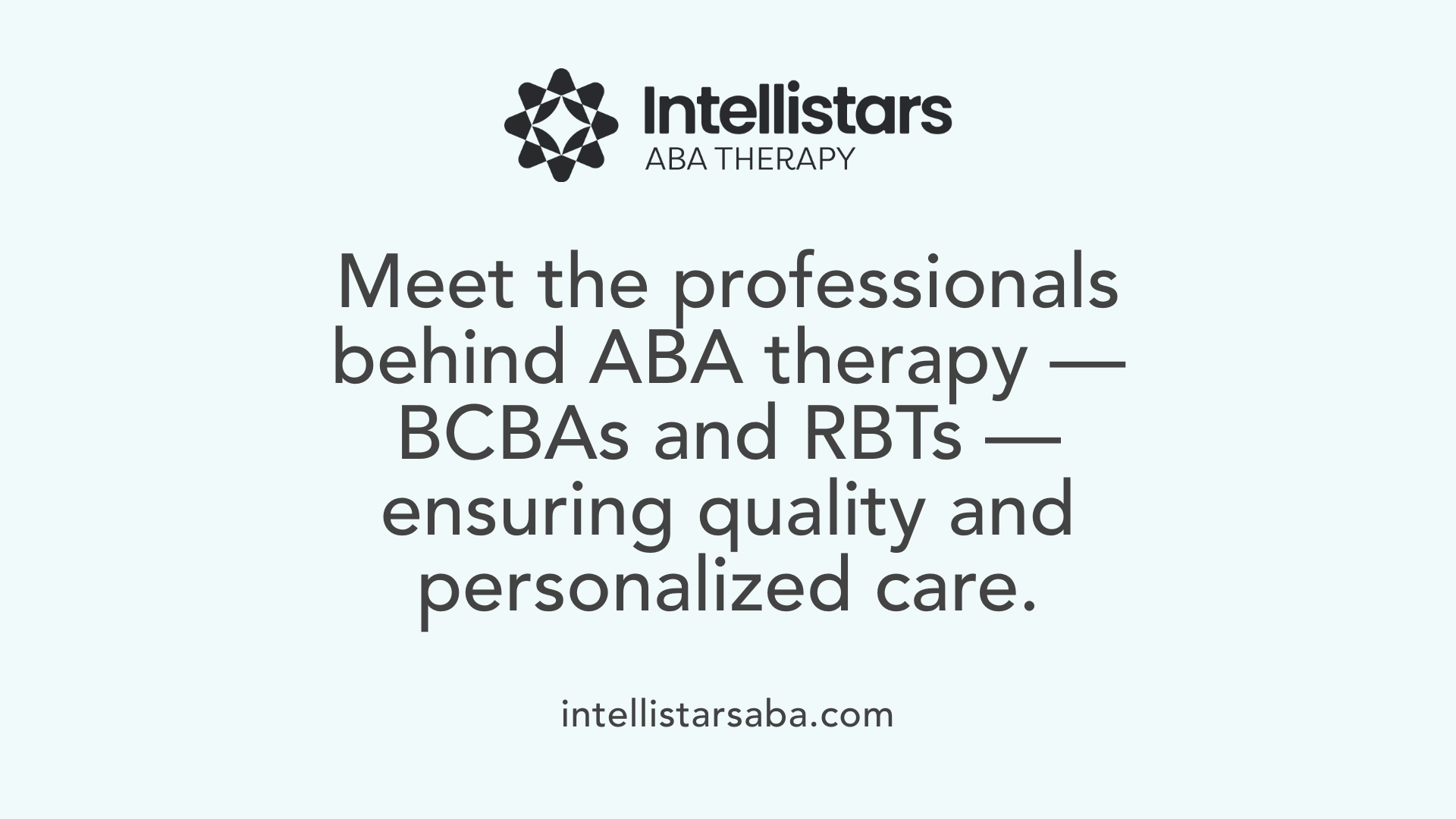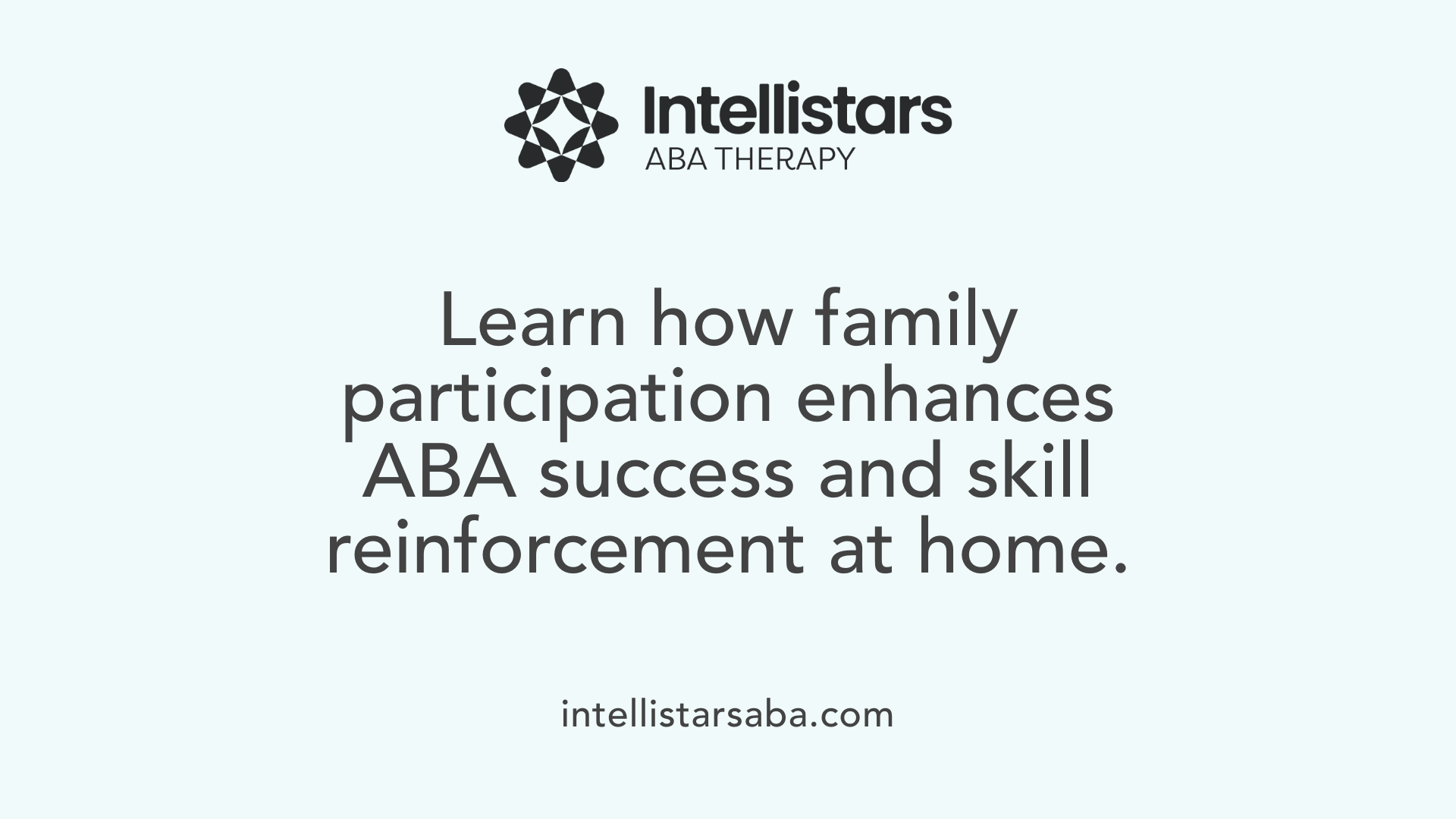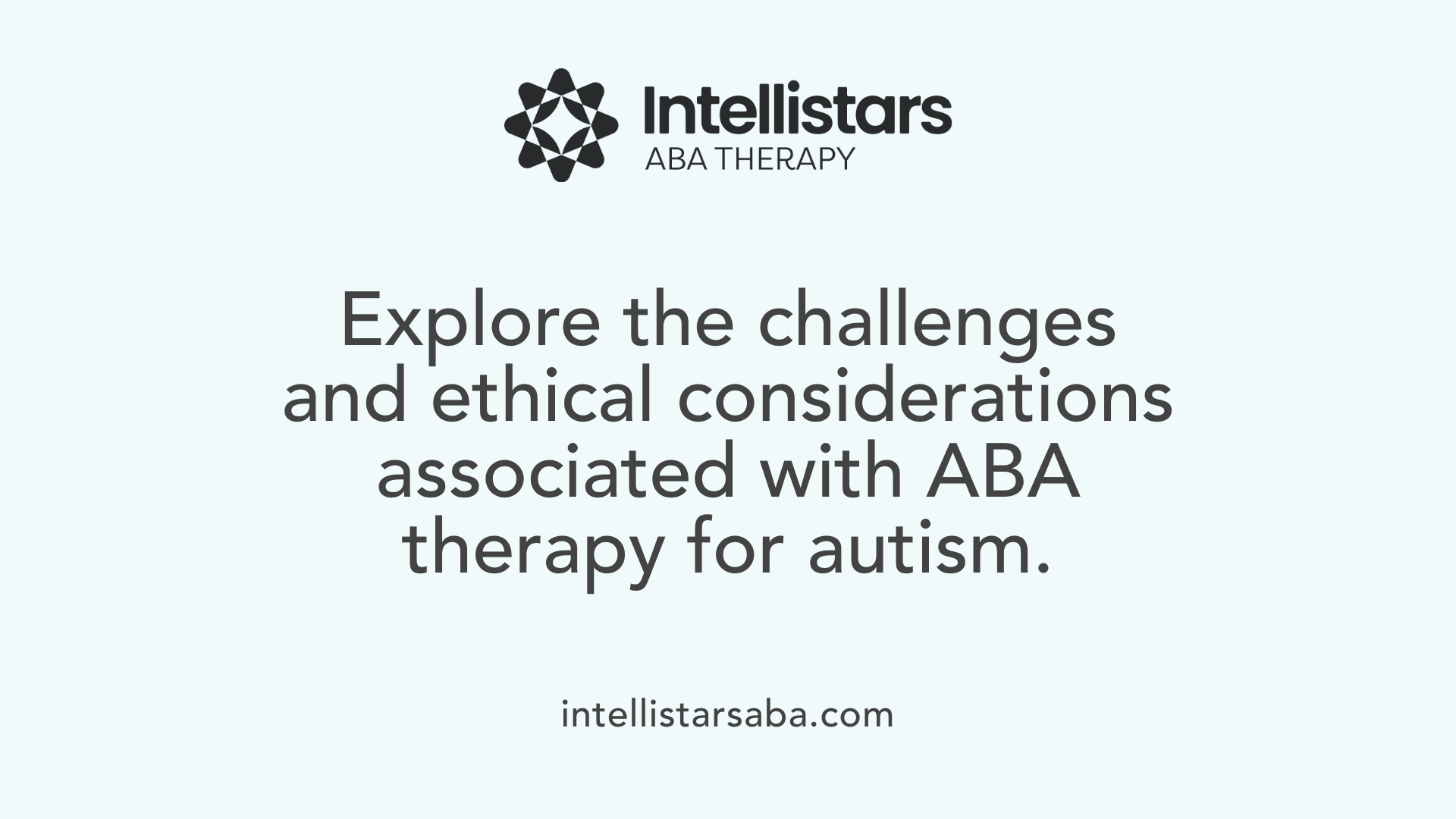Understanding the Cornerstone of Personalized ABA Therapy
Applied Behavior Analysis (ABA) therapy has revolutionized autism treatment by tailoring interventions to individual needs, particularly when therapy plans begin with thorough, in-home assessments. This approach ensures interventions resonate deeply within the natural settings where individuals live and grow, fostering more meaningful progress. Exploring how in-home ABA assessments lay the foundation for customized, effective therapy plans reveals why such strategies are indispensable in enhancing communication, social skills, and overall independence for individuals with autism.
Defining ABA Therapy and Its Role in Autism Support
What is ABA therapy?
Applied Behavior Analysis (ABA) therapy is a science-based approach that uses the principles of learning and behavior to help individuals with autism develop positive skills and reduce challenging behaviors. Highly personalized, ABA programs are tailored to match each person's unique strengths, challenges, and family dynamics. Certified professionals, such as Board Certified Behavior Analysts (BCBAs), create these individualized plans to maximize effectiveness.
Core principles of ABA such as positive reinforcement and task analysis
ABA therapy relies on fundamental principles like positive reinforcement, where desirable behaviors are encouraged by rewarding them, and task analysis, which breaks down complex skills into smaller, teachable steps. These methods are grounded in scientific research and enable consistent measurement and adjustment throughout the therapy process.
Scientific validation and common techniques used in ABA
ABA has been widely validated through research as an effective intervention for autism. Common techniques include Discrete Trial Training (DTT), Early Intensive Behavioral Intervention (EIBI), Pivotal Response Training (PRT), and Verbal Behavior Intervention (VBI). These strategies help improve communication, social skills, and adaptive behaviors.
Goals of ABA therapy in promoting independence and skill development
The main objective of ABA therapy is to foster independence and improve daily functioning by developing communication, social interaction, and life skills. By systematically teaching and reinforcing positive behaviors, ABA enables individuals to reduce harmful behaviors and gain the necessary tools to navigate their environment more effectively, enhancing their overall quality of life.
Who Delivers ABA Therapy? The Role of Specialized Professionals

Types of ABA Providers Including BCBAs and RBTs
ABA therapy is primarily delivered by professionals with specialized training in behavioral analysis. The most recognized providers are Board Certified Behavior Analysts (BCBAs) who design, implement, and supervise individualized treatment plans tailored to each person's unique needs. Supporting BCBAs are Registered Behavior Technicians (RBTs), who directly work with clients to carry out the therapeutic interventions under the close supervision of a BCBA.
Importance of Qualifications and Clinical Oversight
Qualified professionals ensure that ABA therapy is evidence-based and ethically applied. BCBAs undergo rigorous training and certification, which equips them to make data-driven decisions and modify treatment strategies as progress is tracked. Clinical oversight from BCBAs guarantees quality and consistency, adapting therapy to meet evolving developmental goals and ensuring that interventions respect the dignity and autonomy of individuals receiving services.
Settings Where ABA Therapy Is Delivered
ABA therapy can take place in various environments tailored to optimize learning and generalization of skills. Common settings include specialized centers equipped with tools and materials to support therapy, and in-home settings, which allow interventions to be embedded into daily routines and familiar surroundings. In-home therapy often permits better observation of behaviors in natural environments, facilitating highly personalized plans. Schools and community-based environments are also frequent locations where ABA interventions are implemented to support social and adaptive skills development.
Together, these healthcare professionals provide structured and individualized ABA services vital to improving communication, social interaction, daily living, and overall independence in individuals with autism spectrum disorder.
The Critical Value of In-Home Assessments for Tailored Plans

Why in-home assessments provide a better understanding of individual environment
In-home assessments allow behavior analysts to observe an individual within their natural surroundings. This firsthand insight helps identify specific environmental factors, routines, and interactions that influence the person’s behaviors. Understanding the home context enables the design of interventions that are relevant, practical, and easily integrated into daily life.
How personalized plans emerge from comprehensive in-home evaluations
Comprehensive evaluations conducted at home gather detailed information about strengths, challenges, and developmental goals. These insights guide the creation of individualized therapy plans tailored to the child's unique needs, preferences, and family dynamics. Such targeted plans promote motivation, engagement, and effective skill development.
Comparison with clinic-based assessments
Unlike clinic-based assessments, which occur in controlled but artificial settings, in-home evaluations provide a realistic snapshot of daily challenges and supports. This leads to more accurate identification of behaviors and triggers, better-informed intervention strategies, and improved generalization of skills outside of therapy sessions.
How does ABA therapy address the individual needs of people with autism?
ABA therapy begins with thorough assessments to identify each person’s unique profile, including strengths and areas for improvement. Using data-driven, flexible approaches such as positive reinforcement, therapists develop tailored goals that focus on communication, social skills, daily living, and independence. Family involvement and qualified professionals collaborate to create consistent, meaningful interventions across environments, fostering long-term success.
Family Involvement: Extending Therapy Beyond Sessions

How does ABA therapy address the individual needs of people with autism?
ABA therapy success relies heavily on the active participation of families. By involving family members in the treatment process, therapies become more personalized and relevant to an individual's daily environment and routines. This collaboration ensures that interventions are consistently applied beyond therapy sessions, promoting sustained skill development and behavior improvement.
Role of family in ABA therapy success
Families serve as essential partners who reinforce learning objectives and nurture skills at home. Their involvement creates a consistent, supportive environment that complements the structured activities conducted during therapy. This continuity helps infants, children, and adults with autism generalize skills across different settings.
Education and training of families
To empower families, ABA programs provide education and training that equip caregivers with strategies to implement behavioral techniques effectively. This training allows families to understand the goals and procedures of ABA therapy, enabling them to support progress confidently and respond appropriately to challenges.
Creating consistent environments for skill reinforcement
By working closely with professionals such as Board Certified Behavior Analysts (BCBAs), families learn to establish predictable routines and reinforce positive behaviors consistently. This consistency enhances motivation and engagement for individuals with autism, fostering independence and improving communication, social skills, and adaptive behaviors.
Anticipated Outcomes from ABA Therapy
What types of improvements or outcomes can be expected from ABA therapy in autism treatment?
ABA therapy offers comprehensive benefits for individuals with autism, leading to marked advances in several vital areas. One of the most significant improvements involves enhanced communication skills, where children learn to better express their needs and engage in conversations. This includes both verbal language and alternative communication methods tailored to each individual.
Social skills are another area profoundly impacted by ABA therapy. Through structured interventions and positive reinforcement, individuals develop stronger social interactions, building relationships and participating more confidently in group settings. These social improvements extend to understanding social cues and increasing appropriate social behaviors.
Daily living skills also improve with ABA. The therapy focuses on teaching self-care routines like hygiene and grooming, along with functional skills that promote independence. Breaking down complex tasks into manageable steps allows individuals to gain confidence and master tasks essential for everyday life.
ABA therapy is instrumental in reducing maladaptive behaviors such as aggression, self-harm, or repetitive actions. By replacing these with more appropriate behaviors, the therapy enhances emotional regulation and supports overall well-being.
Outcomes vary based on the individual’s unique needs, the intensity and duration of therapy, and the degree of family involvement. Early intervention is especially effective in maximizing developmental gains. The continual use of data-driven approaches and personalized plans ensures sustained progress and adaptation to evolving needs.
Addressing Concerns: Challenges and Limitations of ABA

Are there any criticisms or limitations associated with ABA therapy for autism?
ABA therapy has been widely recognized for its effectiveness in supporting individuals with autism, yet it also faces certain criticisms. One concern relates to the intensity and highly structured nature of ABA interventions. For some individuals, especially young children, this can be overwhelming or lead to feelings of stress and burnout, potentially affecting their willingness to engage.
Another significant critique involves the emotional well-being and intrinsic motivation of the individual. Critics argue that ABA’s focus on compliance and modifying observable behaviors may sometimes overlook the child’s inner emotional state or natural interests. This can risk prioritizing behavior change over fostering genuine social-emotional understanding and self-driven motivation.
In response to these concerns, there is a growing emphasis on adopting ethically sensitive and highly individualized approaches within ABA. These strategies promote respect for each person's autonomy, tailoring therapy to honor their preferences and emotional needs. Ongoing research supports ABA's benefits but also encourages long-term studies to ensure balanced outcomes.
This evolving perspective reinforces that while ABA remains a powerful tool, its implementation must carefully consider the individual's experience, ensuring compassionate, respectful, and person-centered care.
The Evolution and Future Directions of ABA Therapy
Ongoing research and technological advancements
ABA therapy continues to evolve as ongoing scientific research validates and refines its methodologies. New studies consistently support ABA’s effectiveness in improving communication, social skills, and adaptive behaviors in individuals with Autism Spectrum Disorder (ASD). Concurrently, technological innovations are enhancing the delivery of ABA interventions. These include advanced data collection tools and software that allow for more precise monitoring of progress, enabling behavior analysts to tailor treatment plans dynamically in response to individual outcomes.
Focus on ethics and respect for individual autonomy
The field of ABA prioritizes ethical considerations, placing strong emphasis on respecting the dignity and autonomy of individuals receiving therapy. Modern ABA practices incorporate ethical guidelines that ensure interventions support personal choice and promote a person-centered approach. This includes encouraging family involvement and collaborative decision-making, making therapy not just effective but also respectful and empowering for those on the spectrum.
Expanding interventions and flexible delivery models
ABA therapy now features a broader range of flexible, evidence-based interventions beyond traditional strategies. This includes methods like Early Intensive Behavioral Intervention (EIBI), Pivotal Response Training (PRT), and Verbal Behavior Intervention (VBI), tailored to individual needs. Delivery models have also expanded; therapy can take place in specialized centers or within the home environment, allowing personalized strategies that fit the individual’s daily life. Family participation remains integral, with training and support to help generalize skills outside therapy sessions.
Together, these developments ensure that ABA therapy remains at the forefront of autism treatment, continually adapting to scientific advancements, ethical standards, and the diverse needs of individuals and families.
Integrating In-Home Assessments with Broader Therapeutic Services

How does ABA therapy fit within a multidisciplinary approach?
ABA therapy is often combined with other evidence-based interventions such as speech and language therapy, occupational therapy, and social skills training. This multidisciplinary approach ensures that each individual's diverse needs are addressed comprehensively, targeting communication, motor skills, sensory processing, and social interaction alongside behavior modification.
Why are flexible interventions essential when delivering therapy in-home?
In-home assessments provide valuable insights into a person's natural environment, allowing therapists to tailor interventions that accommodate daily routines and family dynamics. Flexibility in therapy methods is crucial to adapt strategies to the unique challenges and opportunities within the home setting, maximizing relevance and effectiveness.
How does integrating ABA with other therapies support overall outcomes?
Combining ABA with other therapies creates a cohesive treatment plan that promotes skill development across multiple domains. This integration aids in improving functional abilities, independence, and quality of life by addressing behavioral goals alongside communication, sensory integration, and social engagement.
In summary, multidisciplinary intervention that blends ABA with speech, occupational, and social skills therapies, particularly when initiated with thorough in-home assessments, fosters personalized and flexible treatment strategies essential for comprehensive autism care.
Personalization Through In-Home ABA Assessments: A Pathway to Empowered Therapy
In-home ABA assessments serve as an essential starting point for crafting therapy plans that truly resonate with the individual's daily realities. By capturing a nuanced picture of behavior within natural environments, these evaluations enable tailored strategies that promote independence, communication, and social engagement. While ABA therapy carries certain challenges, its capacity for flexibility, combined with professional expertise and family involvement, underpins its effectiveness. As the field continues to evolve through research and technology, the integration of in-home assessments remains vital to maximizing the benefit and quality of life for individuals with autism.
References
- Exploring the Importance of ABA Therapy for Autism
- Personalized Approaches to Autism Therapy
- Understanding Applied Behavior Analysis (ABA) Therapy
- Unlocking the Benefits of ABA Therapy for Children ...
- Applied Behavior Analysis (ABA)
- Comparing ABA Therapy Models – Custom vs Traditional
- Personalized Learning in ABA Therapy | Childwise






